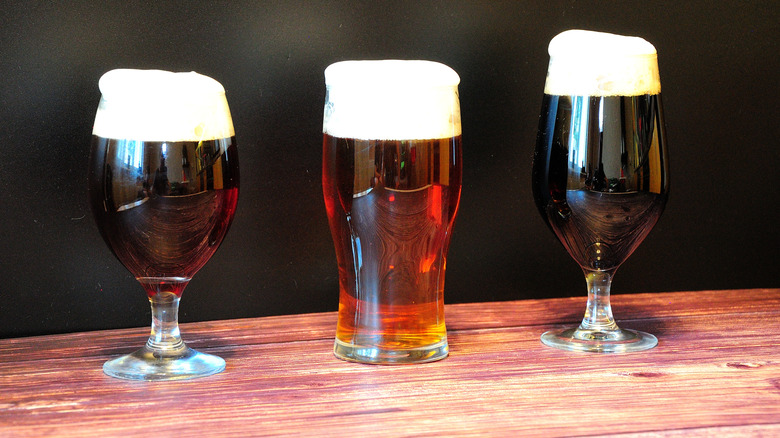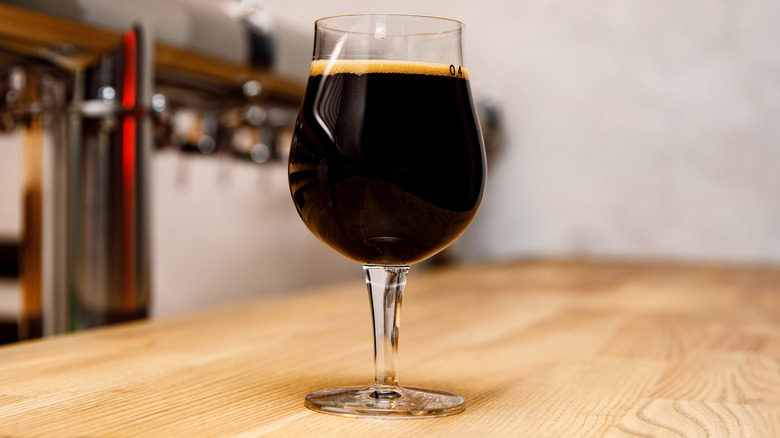The Unique History Of Bock Beer
Walk into nearly any Texas bar and you're likely to find Shiner Bock readily available. First brewed in 1913, the brand is a historic — and for many nostalgic — cold offering. Yet as with many beer styles in the U.S., the bock's true roots lie in Europe, and trace much farther back. In fact, this delicious amber colored lager dates back to the 14th century.
Invented in Einbeck, Germany, bock beer can attribute its distinct style to the city's unique brewing culture. The local government created a regulated system of beer-making, which employed residents to malt grains and brew in their own homes, but with city-owned equipment. The resultant product was overseen by a head brewmaster, thereby ensuring consistent quality control.
Such standardization led to the beer's growing demand over the centuries — the first documented sale of the beer occurred in 1378. Two centuries later, a batch was purchased by Munich, with the Bavarian city influencing the name. Originally, the beer was called Einbeck, after the town. However, accents in Bavaria playfully shifted the word to einbock, which means billy goat. It's the reason you'll see the animal on many labels of the beer style, including on the Texan born Shiner, cementing the beer's legacy.
Bock beer emerged in Germany during the 14th century
The bock beer has only kept evolving since the Middle Ages. Today, you can find it in many different forms. It's brewed both as an ale or lager, with the varying techniques crafting beers that cover the range of strength and flavor. The original Einbeck featured a generous amount of malt, and was top-fermented, leading to a more robust, full-flavored brew. However, over time, many started making the beer into a more drinkable, lower-alcohol creation. Such a composition became the base for many American renditions, in line with the central differences between American and German beer.
However, bock also spun off into other subcategories, too. There's the even more malt-forward doppelbock, which tastes boozier and more robust, invented by German monks in the 17th century. And the ABV keeps climbing with the Eisbock, which utilizes a freezing process to intensify the beer — some varieties can reach 15% ABV. Meanwhile on the more drinkable side, try out the maibock, which brings a nice balance of hoppy and malty notes and is intended to be enjoyed in the sunny month of May. Ever since the (likely accidental) invention of beer, the beverage has only kept evolving, and bock's history reflects brewing's wide-ranging potential.

